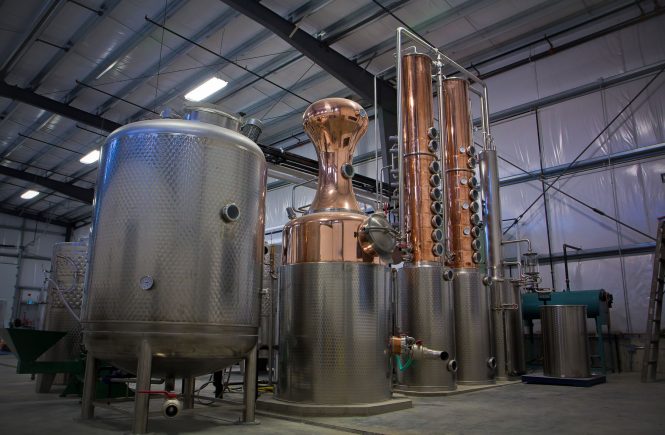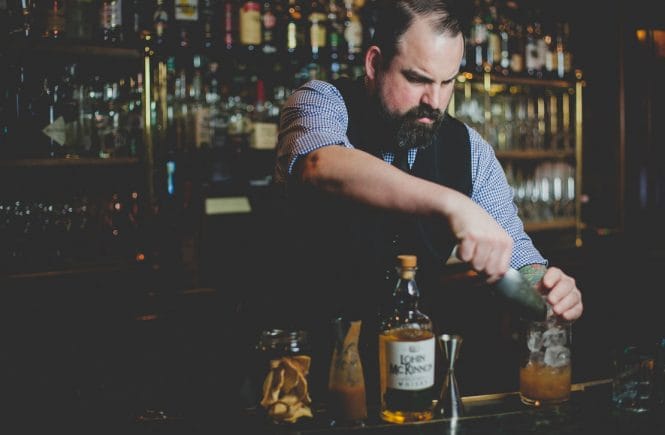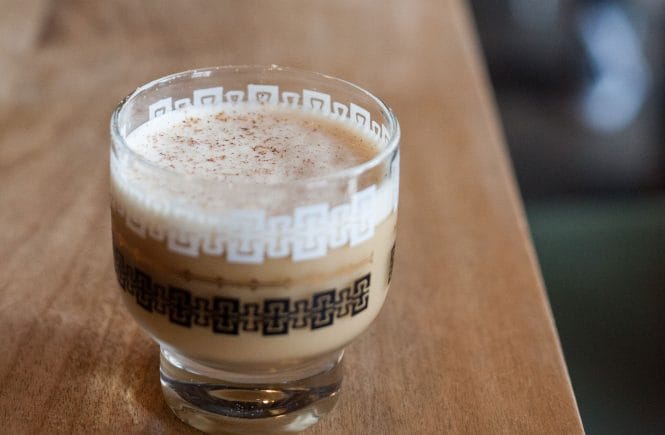The Alchemist’s tasting panel revels in the complexities of made-in-B.C. amaros, vermouths and aperitifs
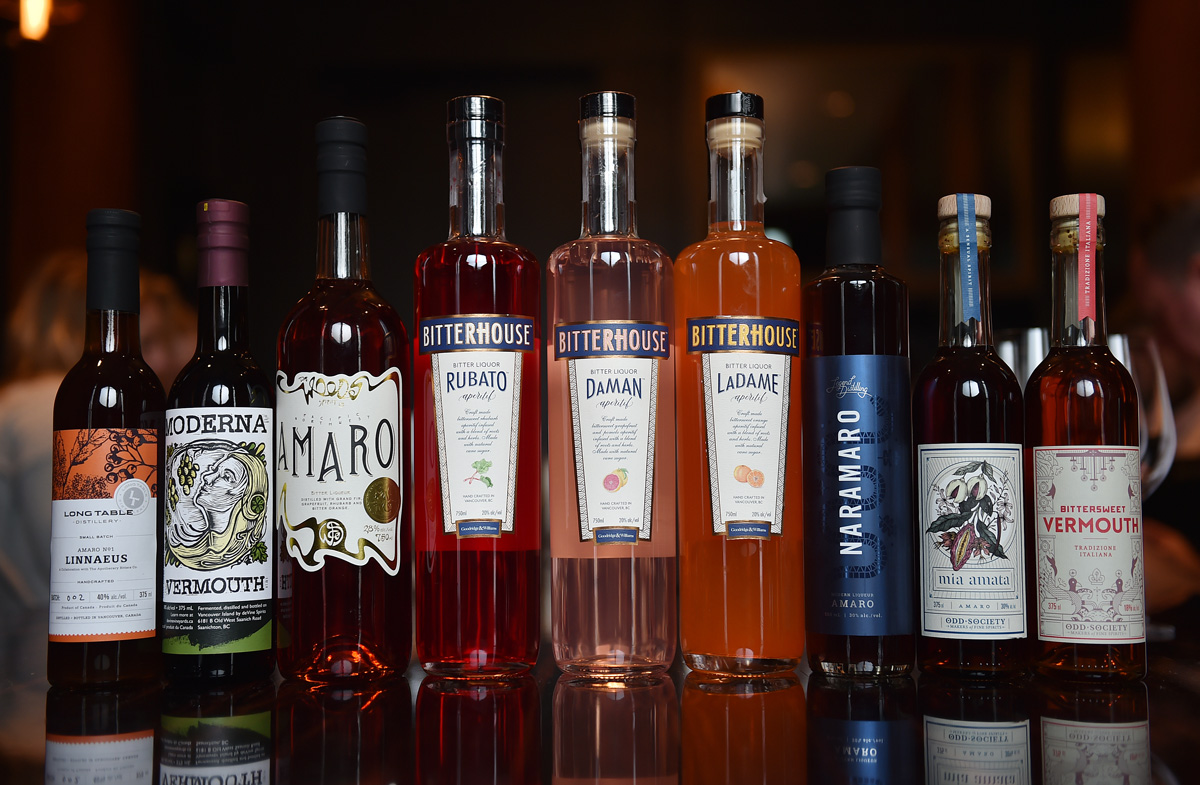
Consider them the supporting actors of the cocktail world: complex, helpful and a little bitter. Vermouths, aperitifs and amaros are typically fortified wines—though some are sweet enough to be considered liqueurs—flavoured with botanicals such as citrus peel, spices, roots and herbs. They typically have a somewhat bitter profile, hence the name “amaro,” which means bitter in Italian.
It takes a sophisticated palate to appreciate a good bitter drink, so not too surprisingly, Vancouver bartenders were eager to sample the best of B.C. amaros. We sat down with Alex Black of Tableau Bar Bistro, Amber Bruce of The Keefer Bar, cocktail consultant Sabrine Dhaliwal, Robyn Gray of the Rosewood Hotel Georgia and The Botanist’s Jeff Savage to get at the bitter truth.
On their wish list? More of these products. As Gray said, “Being able to make a dry Martini with a really dry vermouth out of the Okanagan would be the very best thing that could happen.”
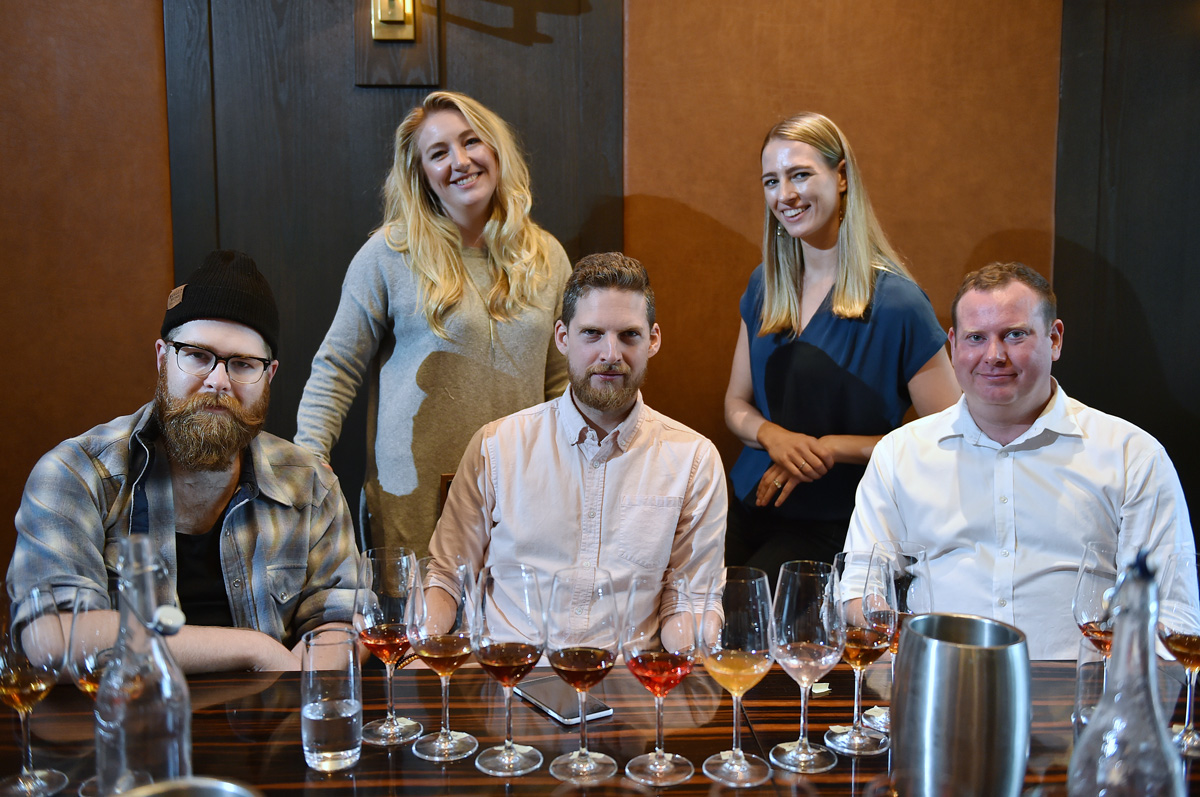
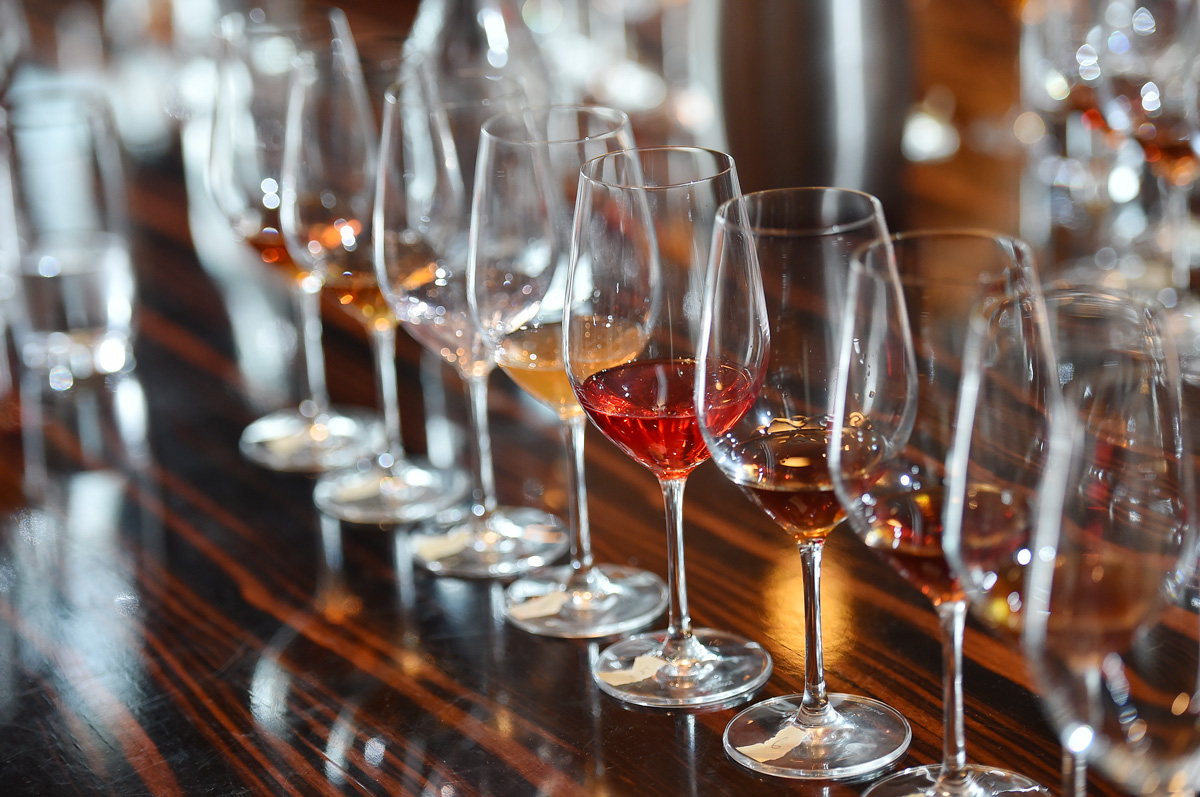
Odd Society Bittersweet Vermouth
Halfway between a sweet vermouth and a dry one, this vermouth features 25 botanicals and is fortified with malted barley spirit, which gives it an unusual depth of flavour. “I’d compare it to an Americano, not a vermouth,” Black said. Added Savage, “Is their aim to be Punt e Mes?”
Bruce detected lots of clove and savoury spices, while Dhaliwal got a candied fruit flavour. “It toes the line for me of an amontillado sherry,” she said, “the viscosity, the honeyed notes, that musty flavour. I think it’s good, but it’s confused in identity.”
Cocktail: Savage has used the Odd Society vermouth in a Vancouver cocktail, but suggests making a Cobbler with it. Black agreed: “A fall cobbler, with spice.”
De Vine Moderna Vermouth
This dry vermouth was adapted from a 1786 recipe; to make it, de Vine uses their own wine and spirit, infused with 30 botanicals. But there was one surprising note that dominated the rest.
“It’s super olive-y,” said Savage. Gray agreed: “Huge olive.” The bartenders found that the Moderna’s savoury flavour and bright, mouth-watering acidity compared nicely with some Spanish vermouths. “It’s growing on me,” Dhaliwal said after a few sips.
Cocktail: While several options were suggested, including a spritz or Hanky Panky, in the end they agreed with Black, who said: “This is something I’d pull out of the fridge at night and enjoy it on its own.”
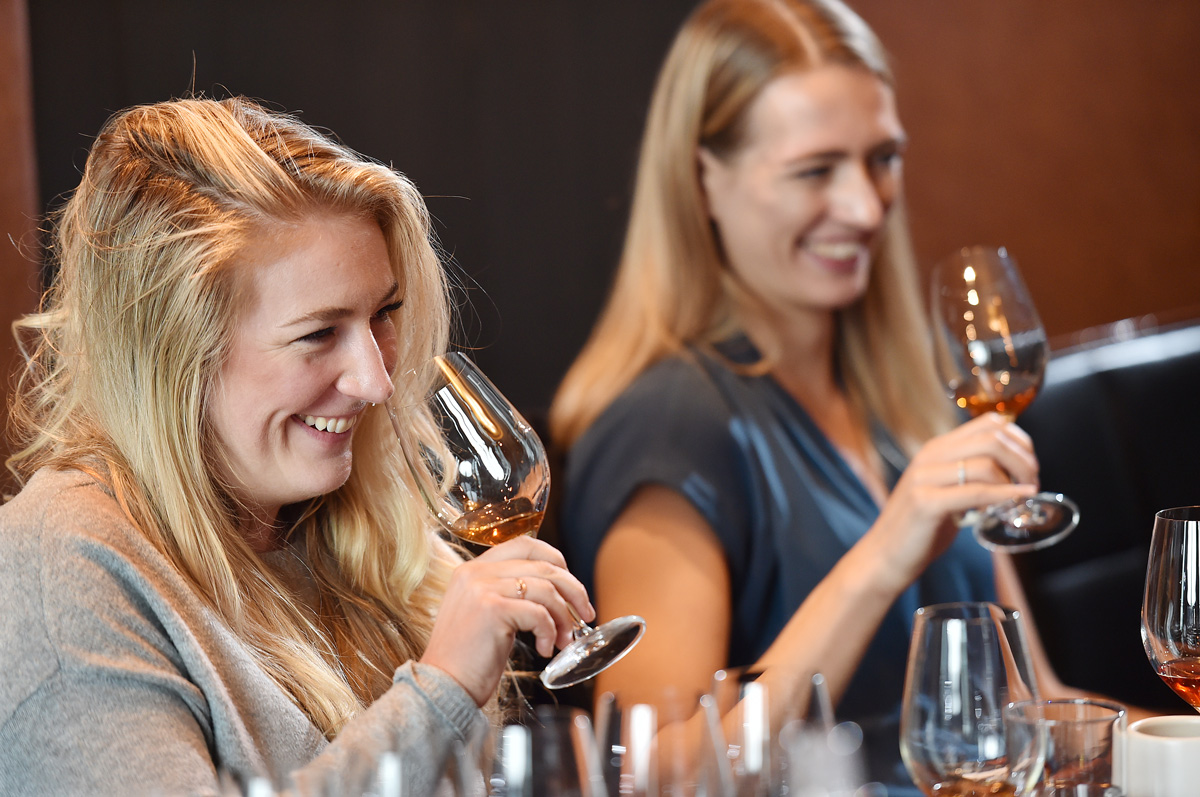
Bitterhouse DaMan Aperitif
The first of three aperitifs produced by Delta’s Goodridge & Williams Distilling, this grapefruit- and pomelo-flavoured libation is similar to the citrusy aperitifs enjoyed in Italy, and designed especially for cocktails.
Right away, the bartenders detected notes of Jolly Ranchers and Fresca. There was loads of grapefruit here, but the bartenders also noted that DaMan is quite sweet, which can be effective in a cocktail provided the other ingredients are balanced.
Cocktail: Savage wanted to use it in a G&T along with a splash of rosewater. Dhaliwal thought Paloma. And Bruce suggested: “Throw this in a Bellini machine and see what comes out at the other end. Fro-maro.”
Bitterhouse LaDAME
With its sweet candied orange notes and vivid sunset hue, this is G&W Distlling’s made-in-B.C. take on Aperol. It’s lighter in texture, though, and not as sweet, with subtle woodsy notes from roots and herbs. As Savage said, “It’s definitely more bitter than Aperol.”
“It tastes like when you finish a popsicle, that dry tinge,” Bruce said. Gray agreed: “Like licking an orange popsicle stick.”
Cocktail: “I think the wood notes would be good to do a straight sub for the Aperol in a Paper Plane,” Black suggested. “A Creamsicle—with cream and bubble,” Gray said. Added Dhaliwal: “It would be good Grasshopper style, with all that cream.”
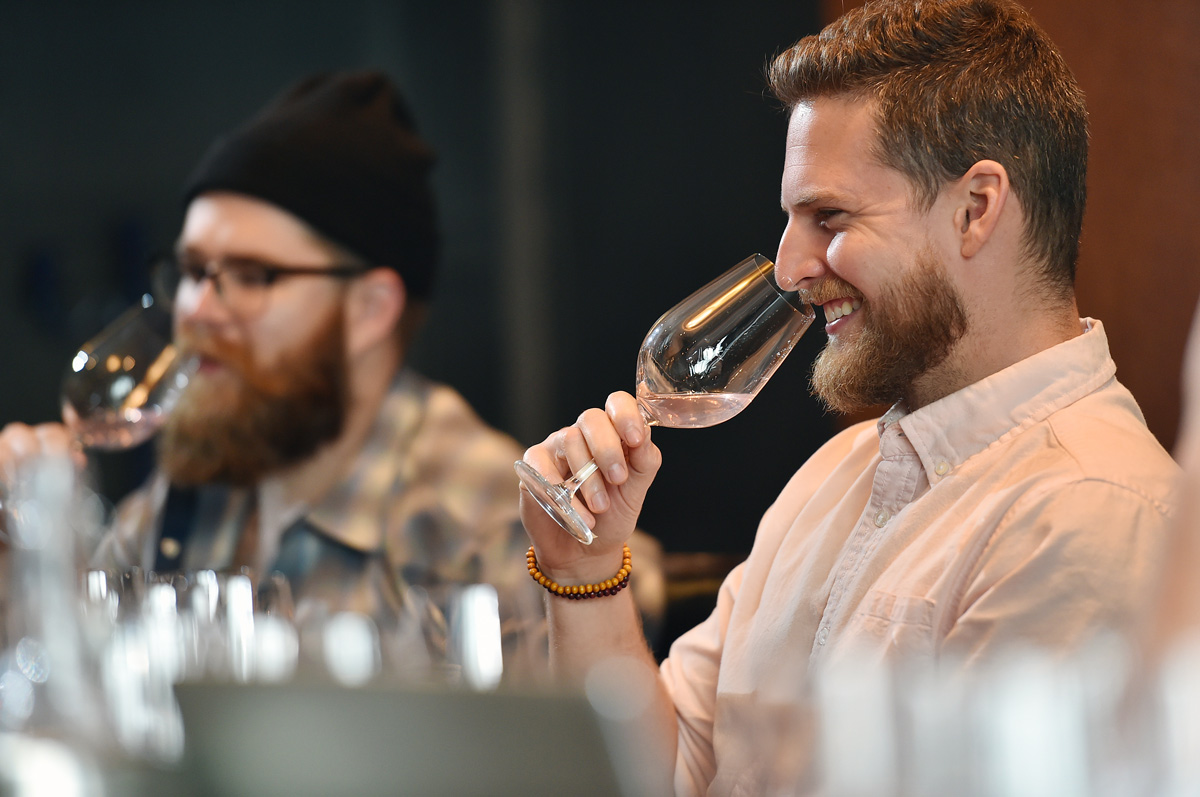
Bitterhouse Rubato
The bright red hue is the clue here: This slightly bitter, rhubarb-flavoured aperitif has a similar profile to the Italian aperitif Campari. Indeed, G&W recommends using it in that classic Campari cocktail, the Negroni.
“I’m not getting that Campari bitter orange kick at all,” said Gray, adding, “It’s smooth. It’s good.” “For me, if I’m going to compare it to Campari, I’m not going to like it,” Savage said. “But on its own, it’s got some nice fruit and spice.”
Cocktail: The bartenders agreed this would work well in cocktails like the Americano, Old Pal or Negroni, especially an all-B.C. Negroni.
Legend Distilling Naramaro
“This is the best local product I’ve tried in a long time,” Black said of the amaro from Naramata. Bruce agreed: “As far as products coming out of B.C., this is really good.” She admired its balance; Dhaliwal liked the acidity; Savage its perceived sweetness.
Each bartender also picked up different flavours in what was perhaps the most complex of all the products tasted: sticky toffee pudding; Toblerone orange; candied orange; marzipan. “It could be a bitter version of Bénédictine,” Savage said. “It’s super Christmassy,” Black added, “like opening a box of Pot of Gold.”
Cocktail: Whisky cocktails like Manhattans were the go-to here, whether Scotch, bourbon or rye. Or, as Savage said, “Honestly, a rock and an orange twist would be good with it.”
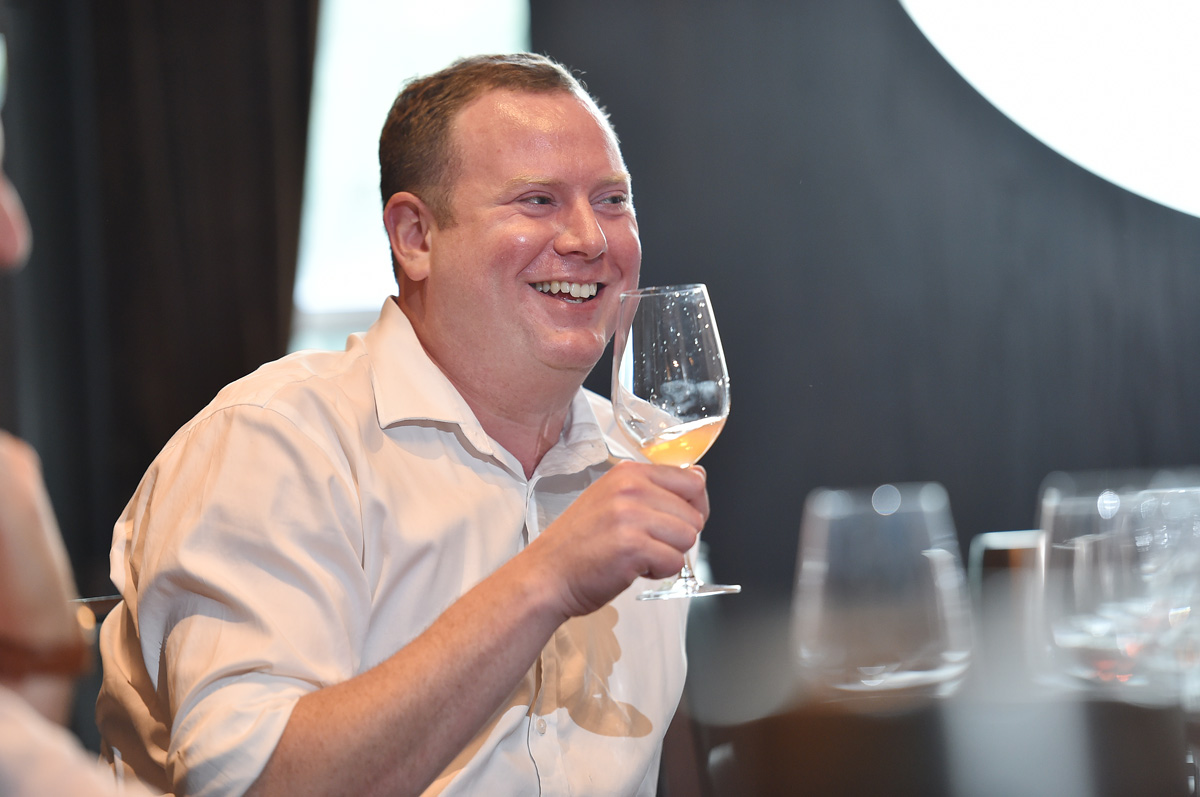
Odd Society Mia Amata
Named in part for master distiller Gordon Glanz’s daughter Mia, who co-produced it, this complex digestive liqueur is flavoured with exotic botanicals, many with aphrodisiacal properties, including myrrh gum, kola nut, candied plum, vanilla and cacao.
“I just get a ton of plum on the nose,” Savage said. Added Dhaliwal: “And so much cinnamon on the palate.” “I get bitter chocolate and cardamom. It’s kind of floral, too,” said Bruce.
Cocktail: “I would toss it in an Espresso Martini,” Savage said. “Just sub that out for the coffee liqueur.” “An Amaro-cino,” Black said.
Long Table Linnaeus Amaro No. 1
Made in collaboration with Cole Benoit of The Apothecary Bitters Company, what’s billed as Western Canada’s first amaro is made with 29 different botanicals and a Merlot pomace base.
Even though Long Table describes it as a liqueur, the bartenders felt this amaro was very dry, perhaps because of its relatively high alcohol content (40 per cent ABV). They also detected plenty of spice, especially cinnamon and green cardamom. And it was strong. “You could dash it in as a bitter,” Gray said. “Maybe that’s what Cole was going for.”
Cocktail: “If I’m making a Canadian Old Fashioned, this is what I want to reach for,” Black said. “A Canadian rye like Albert Premium Dark Horse, maple syrup and this as the bitter.”
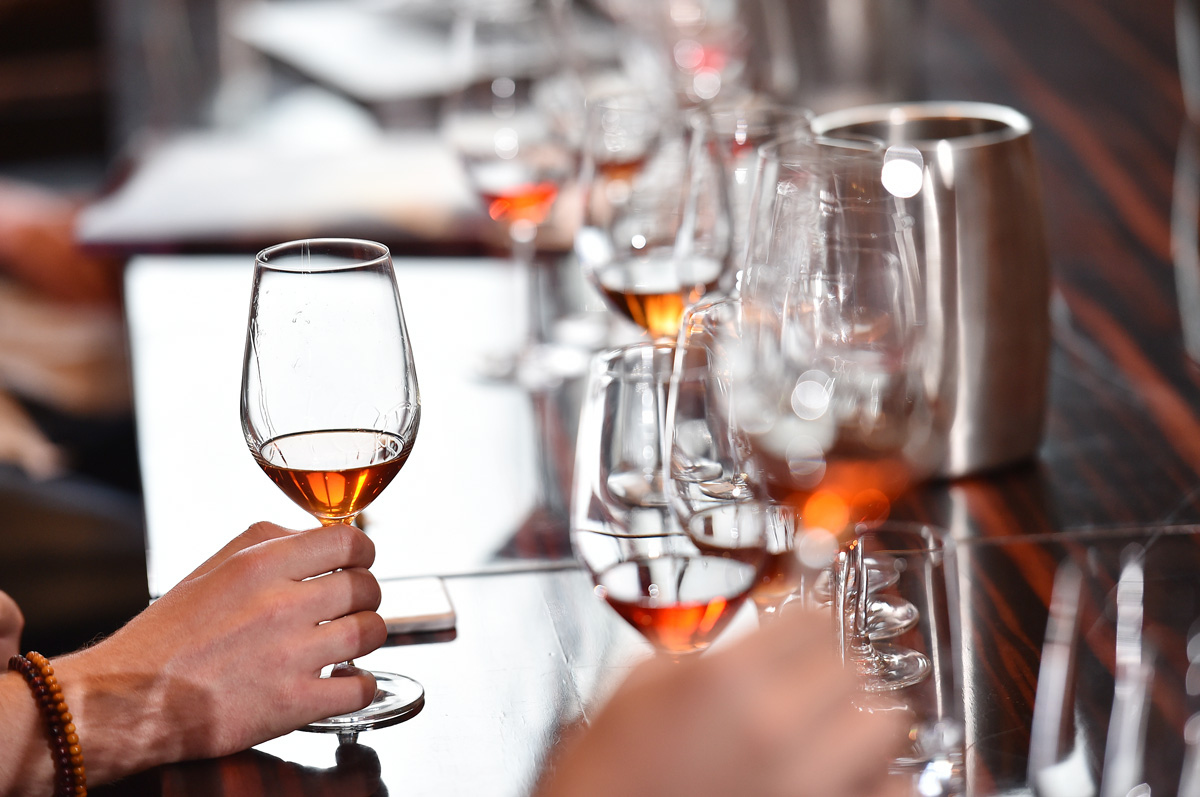
The Woods Amaro
In addition to traditional ingredients such as citrus, The Woods uses rhubarb, gentian root, wormwood and B.C. botanicals including grand fir needles and blackberry honey.
“It’s very floral,” Black said. “I’m getting a little grapefruit pith, too.” Savage, on the other hand, detected “almost a creamy white chocolate element.”
The bartenders noted that, like the Odd Society Bittersweet vermouth, The Woods Amaro varies a bit from batch to batch and that this one seemed sweeter than most. “But that’s the beauty of craft spirits,” Gray said. “They’re rough, they’re not defined.”
Cocktail: “We’re making a bourbon Old Pal with this,” Bruce said. Savage agreed: “I think the Old Pal idea is good. Anything bourbon, stirred.”
—by Joanne Sasvari


